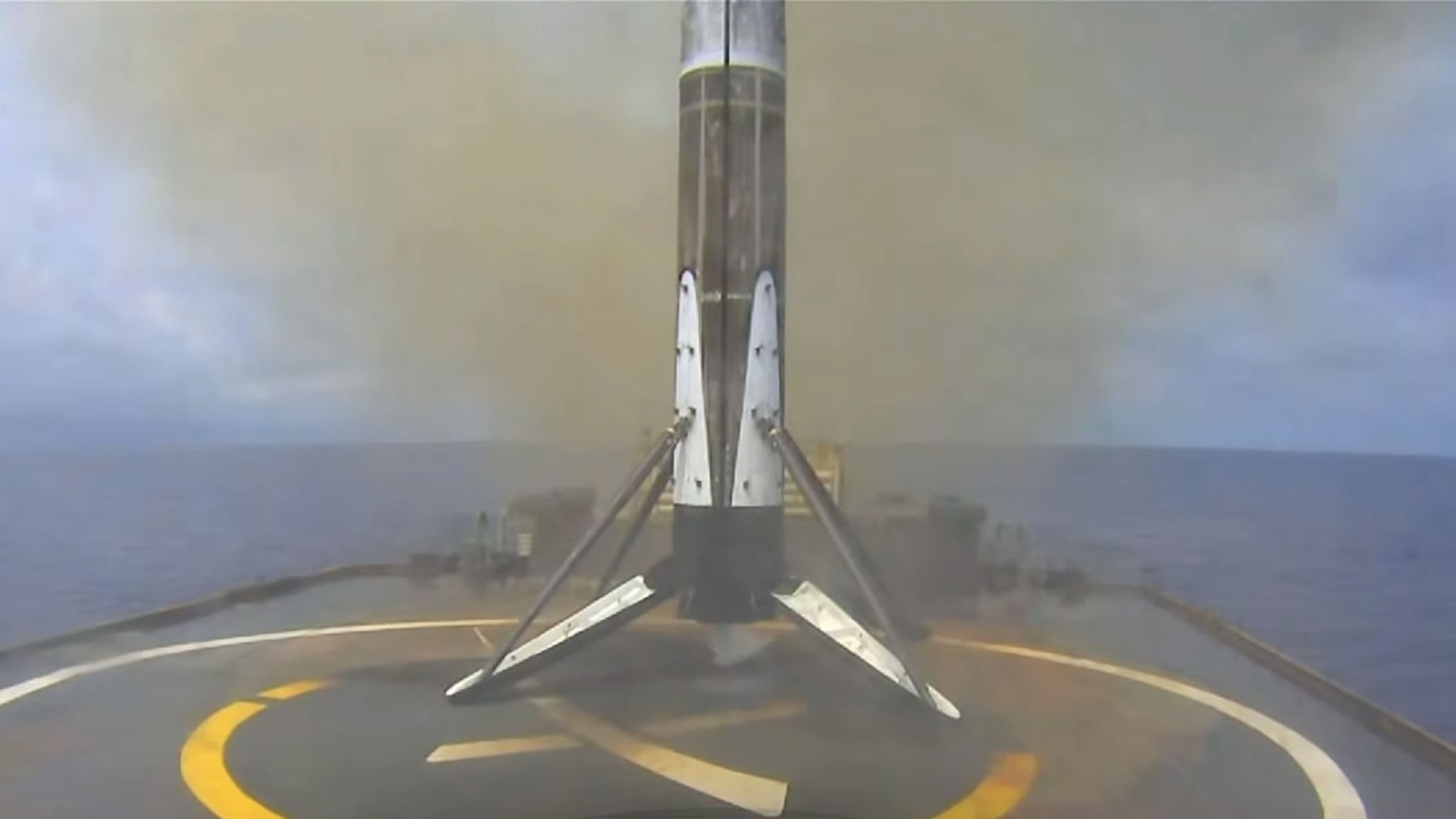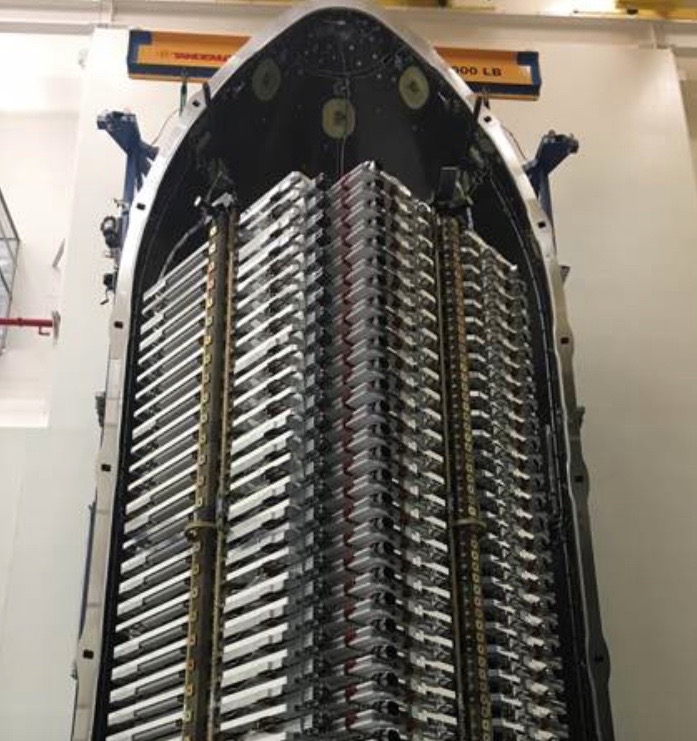SpaceX Falcon 9 rocket launches 60 new Starlink satellites, nails its 2nd drone ship landing at sea
It was only the second mission for this shiny new booster.
CAPE CANAVERAL, Fla. — A SpaceX Falcon 9 rocket launched a new stack of Starlink internet satellites into orbit Wednesday afternoon (May 26), before sticking a landing at sea to top off the mission.
The previously-flown Falcon 9 rocket blasted off from Space Launch Complex 40 at Cape Canaveral Space Force Station here in Florida at 2:59 p.m. EDT (1859 GMT), marking the company's 16th launch of the year. It also marked the second flight for this particular Falcon 9.
"What a beautiful day for rocket launch here. As you can see the Falcon 9 has successfully lifted off from Pad 40 at Cape Canaveral Space Force Station, carrying our stack of 60 Starlink satellites to orbit," SpaceX engineer Youmei Zhou said during a live webcast of the launch.
Video: SpaceX launches 60 new Starlink satellites, nails landing!
Related: SpaceX's Starlink satellite megaconstellation launches in photos
The successful liftoff marked the fourth time SpaceX launched a batch of Starlink satellites on one of its 229-foot-tall (70 meters) workhorse Falcon 9 rockets within four many weeks, as the company works to expand its burgeoning broadband constellation. SpaceX's rapid pace will continue in June as the company has a busy month ahead, including the next space station resupply mission, slated to blast off June 3.
Approximately nine minutes after liftoff, the rocket's first stage returned to Earth, touching down on SpaceX's drone ship "Just Read the Instructions," for a second successful landing.
It was nothing but blue skies over the space coast as the Falcon 9 rocket thundered across the sky. Weather forecasters with Space Launch Delta 45 (formerly known as the 45th Space Wing) at Patrick Space Force Base in Florida predicted a 90% chance of favorable conditions for launch and mother nature did not disappoint.
Breaking space news, the latest updates on rocket launches, skywatching events and more!
In photos: SpaceX launches, lands 1st reused Falcon 9 rocket
SpaceX has been taking advantage of its fleet of flight-proven boosters, as all of its missions so far in 2021 have flown on a reused rocket, with 13 of those missions carrying Starlink satellites.
Today's flight, called Starlink 28, is a bit unique in that SpaceX is using one of its newest boosters to loft the broadband satellites into orbit. Typically SpaceX saves boosters with fewer miles on them for paying customers, opting to reserve the most-flown boosters for its own missions. This way SpaceX can push each booster to its limits.
A growing constellation
SpaceX's Starlink megaconstellation was created with one major goal in mind: to provide internet coverage to the world. The company is targeting users in remote or rural areas who currently have little to no internet connectivity, but users all around the globe will be able to subscribe to the service, the company has said.
At the same time, SpaceX hopes Starlink will serve as a means to fund its deep space ambitions, like its Starship program. To that end, company engineers designed this fleet of flat-paneled broadband satellites to fly over the Earth, beaming down internet coverage to users who can access the service via a compact user terminal.
With Wednesday's successful launch, SpaceX has lofted 1,737 Starlink satellites into orbit (including the initial test versions), which goes beyond the company's initial quota of 1,440 satellites. However, the company has official approval for thousands more.
Currently, Starlink is still in its beta-testing phase with users around the world putting the service through its paces ahead of a full commercial service rollout, which should happen later this year. The company has opened up the Starlink website for preorders and says that more than 500,000 users have signed up so far.
Starlink review (hands-on): How good is Elon Musk's satellite internet service?
Falcon 9's reliability
The booster used in Wednesday's launch, called B1063, is one of SpaceX's newest members to join its frequent flier's club. The veteran launcher now has two launches and landings under its belt as the company continues to push its Falcon 9 rockets to the limit.
This booster made its debut in November 2020 with the launch of an ocean-mapping satellite, called Sentinel-6 Michael Freilich, on behalf of NASA and the European Space Agency. Following a trek across the country from California's Vandenberg Air Force Station to Cape Canaveral, the booster was ready to loft its second payload: a full stack of SpaceX's own Starlink satellites.
This is the 119th overall flight of a Falcon 9 rocket booster and the 66th reflight of a refurbished one. In fact, every single SpaceX launch so far in 2021 has been on a flight-proven rocket, including the launch of four astronauts to the International Space Station on April 23. That mission, called Crew-2, was the first to launch people on a previously-flown booster.
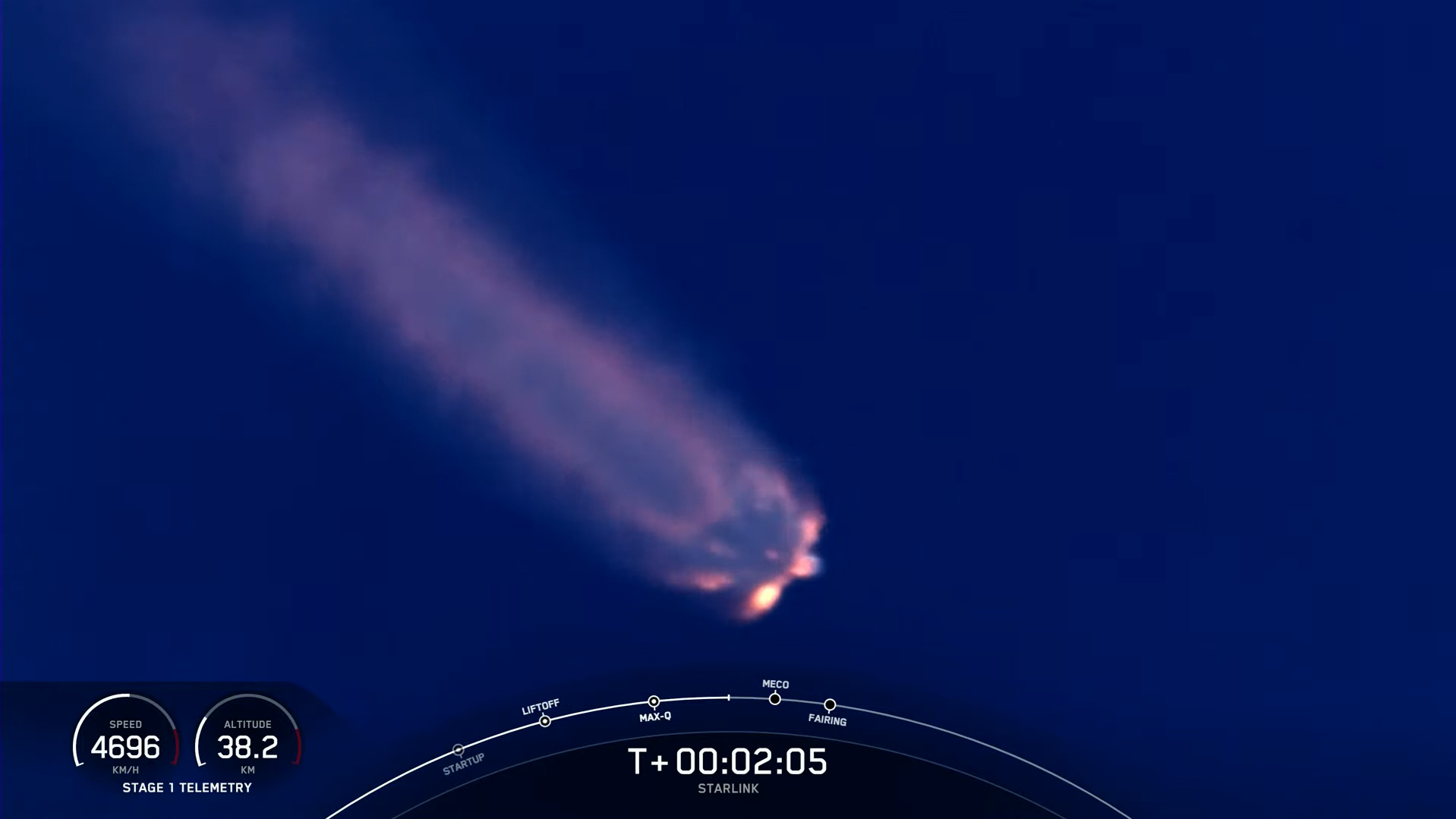

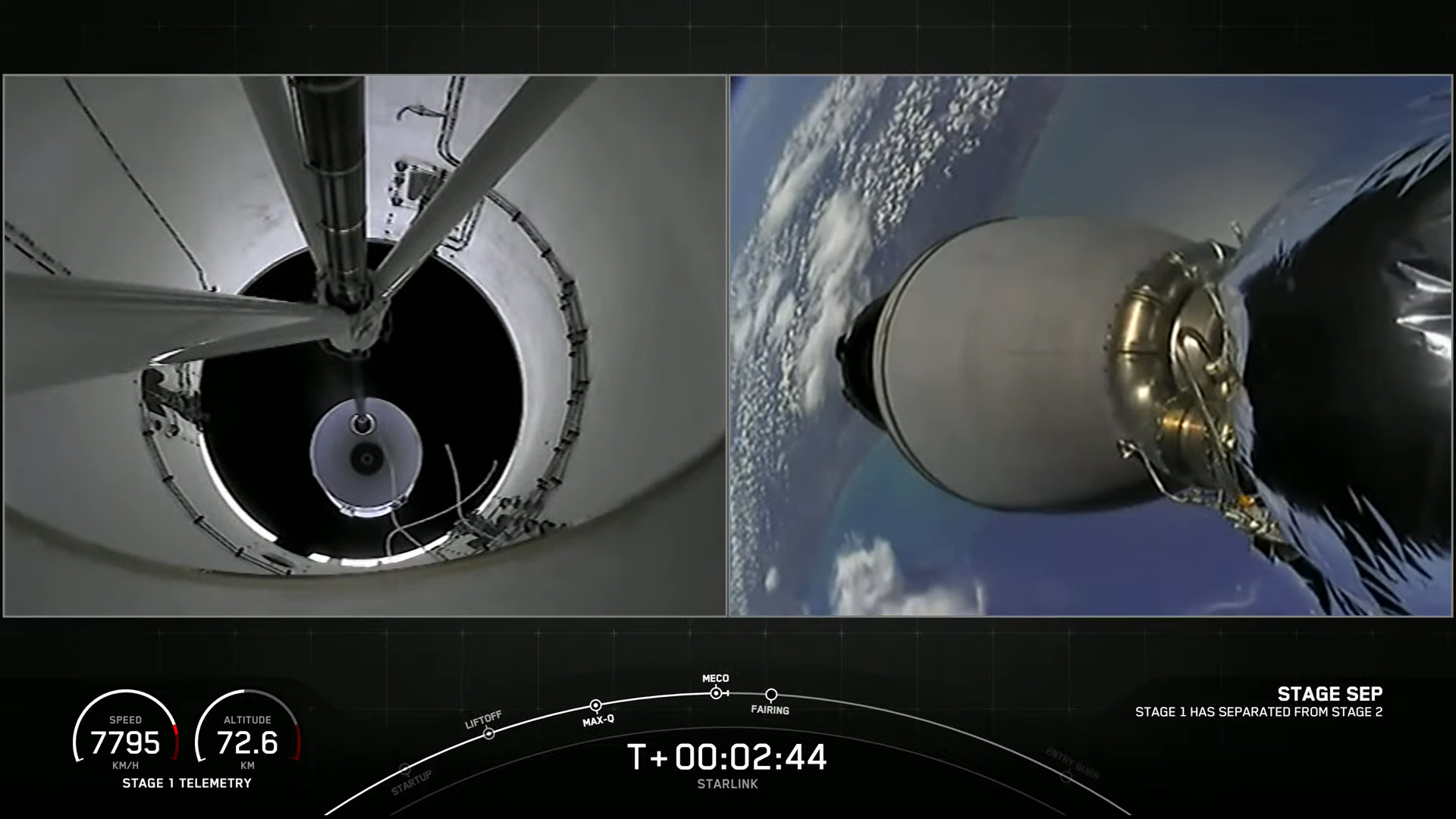
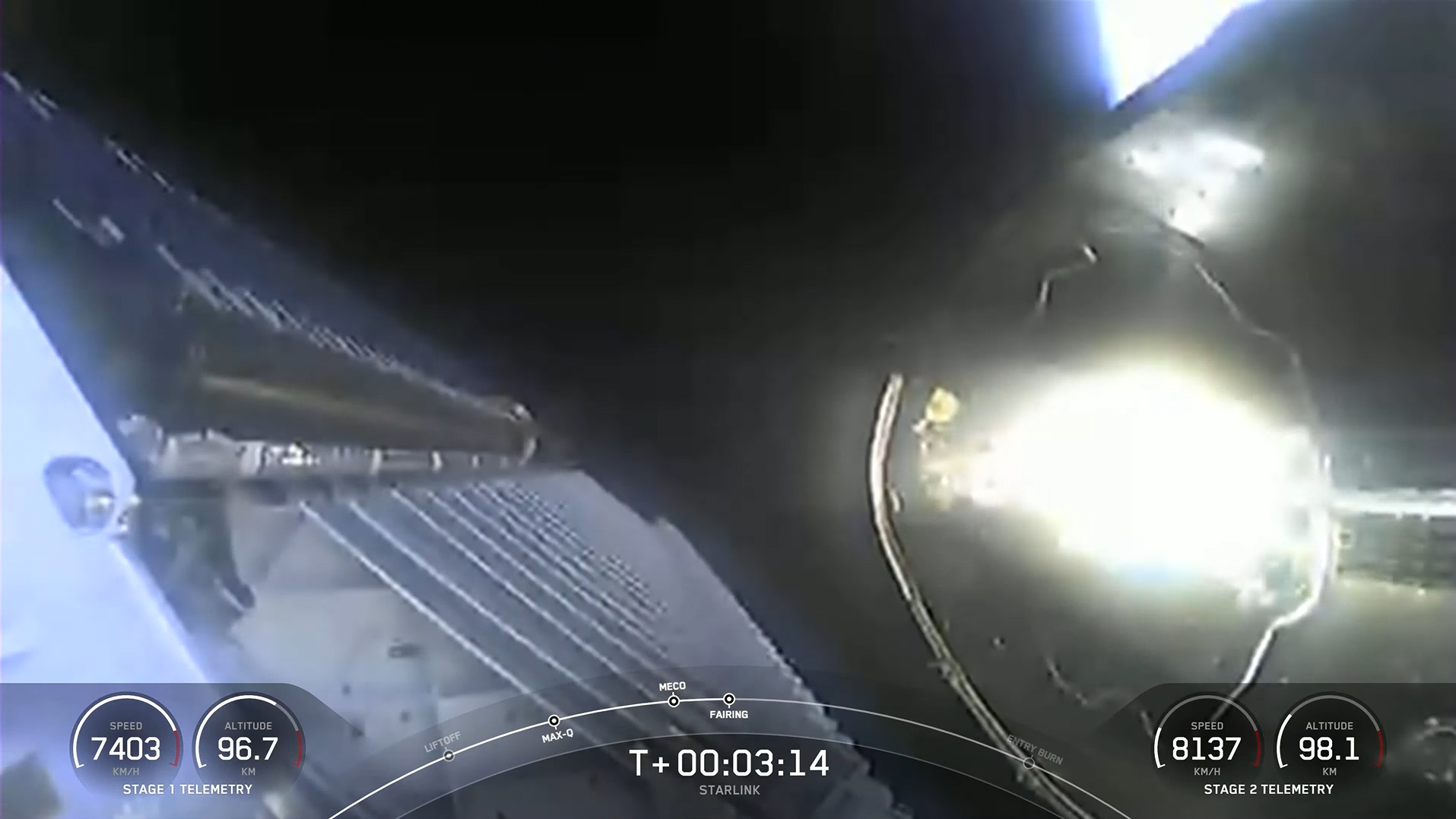
The Falcon 9 has been a workhorse for SpaceX, and with the debut of the souped-up iteration we see today, SpaceX is able to achieve its goal of rapid reusability.
In 2018, SpaceX tweaked its prime launcher, adding upgrades that would facilitate reuse. This version of Falcon 9, known as Block 5, has enabled SpaceX to launch more rockets than ever before. This achievement was thanks to a series of modifications, including a more robust thermal protection system, titanium grid fins and more powerful engines.
When it debuted three years ago, SpaceX CEO and founder Elon Musk told reporters that the company expected each Falcon 9 to fly 10 times with few refurbishments in between flights, and as many as 100 times before retirement.
SpaceX recently achieved that milestone with another booster — B1051. That launcher was the first to reach 10 flights and is not stopping any time soon. According to Musk, 10 flights is not a hard limit or magic number. As the company continues to refine its refurbishment process, it will continue to push each Falcon to its breaking point, he said.
Having a fleet of flight-proven rockets at its disposal allows SpaceX to keep up with its rapid launch cadence.
Wednesday's flight marks the 100th consecutive successful flight of SpaceX's Falcon 9 rockets since the company lost a Dragon cargo capsule during a launch failure in 2015. The incident happened after the rocket's second stage failed during the flight to the International Space Station, resulting in an explosion that caused the loss of the cargo capsule. (SpaceX lost one other payload, but that did not occur during a launch.)
Ever since, the company has nailed every milestone and flight, including the third astronaut launch in less than a year, after returning human spaceflight to U.S. soil for the first time since the space shuttle retired in 2011.
Both NASA and the U.S. Space Force have taken notice of SpaceX's track record, granting the company approval to fly their payloads on reused rockets.
SpaceX will continue its tradition of recovering the payload fairings with the Starlink 28 mission. The company recently said adieu to the brightly painted boat named Shelia Bordelon, and is using one of its Dragon recovery vessels, GO Searcher, to retrieve the fairings for this mission.
Each of the two clamshell-like pieces of hardware has flown before, with one of the halves completing its fifth successful mission on Wednesday. The other has now served on three different missions. If all goes as planned, both pieces will fly again soon.
Follow Amy Thompson on Twitter @astrogingersnap. Follow us on Twitter @Spacedotcom or Facebook.

Amy Thompson is a Florida-based space and science journalist, who joined Space.com as a contributing writer in 2015. She's passionate about all things space and is a huge science and science-fiction geek. Star Wars is her favorite fandom, with that sassy little droid, R2D2 being her favorite. She studied science at the University of Florida, earning a degree in microbiology. Her work has also been published in Newsweek, VICE, Smithsonian, and many more. Now she chases rockets, writing about launches, commercial space, space station science, and everything in between.
